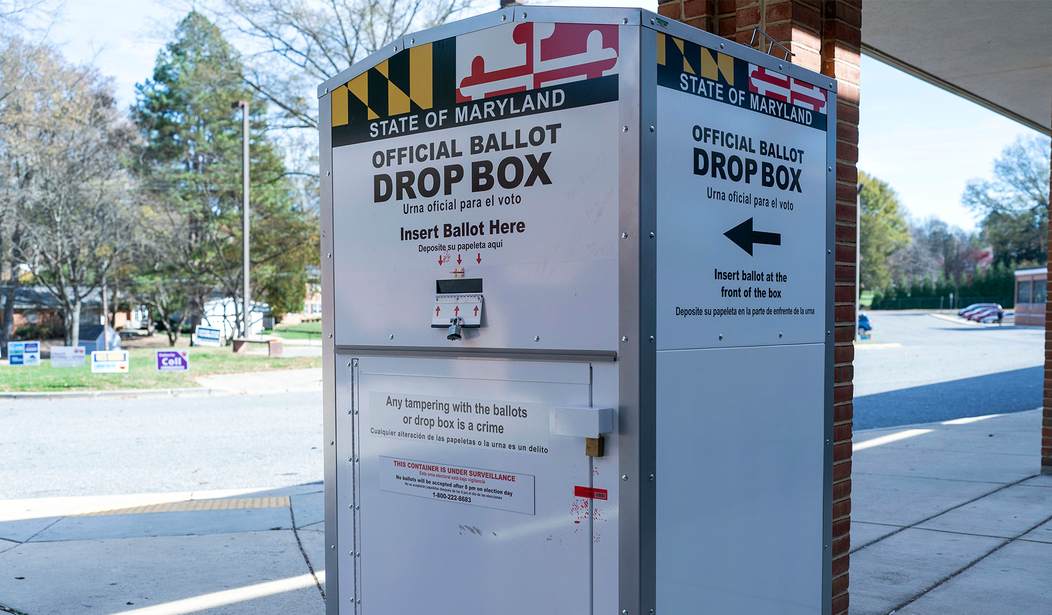This article is the 10th installment of the VICI Report, a comprehensive multi-part series exploring the sophisticated use of technology in political operations. This series aims to uncover the processes, mechanisms, tools, and technologies used by Democrats to master our political processes and to develop strategies that answer and ultimately defeat their manipulations in 2024 and beyond.
Read the previous article in this series, The Tech Takeover, which discusses how the systematizing effect of technology has fundamentally transformed political mechanics, or start from the beginning of our series.
Introduction
Securing electoral integrity requires a thorough analysis of electoral processes to identify vulnerabilities, especially those exploitable by Democrats via ballot harvesting. Understanding these vulnerabilities is crucial for maintaining the integrity of the electoral system.
Political processes have evolved significantly, influenced by advancements in technology and the principles of complex systems theory. Historically, political machines, notably those employed by Democrats, have demonstrated how systematic operations and strategic planning can mobilize votes and secure electoral victories. By examining these processes, it becomes evident that mastering them is essential for any political entity aiming to succeed.
In this context, a backtrace analysis emerges as a valuable methodological tool. By tracing the electoral process backward, from the final vote count to voter registration, it is possible to pinpoint potential manipulation points. This comprehensive approach not only highlights the critical stages where integrity can be compromised but also reinforces the need for a deep understanding of electoral mechanics.
What Is a Backtrace?
A backtrace is an analytical method that involves retracing the steps of a process from the end result back to the beginning. Its primary purpose in process analysis is to identify key actions, potential errors, and manipulation points. Commonly used in software development, a backtrace helps pinpoint error points preceding break points, allowing for effective troubleshooting and correction.
In the context of electoral processes, backtracing is instrumental in identifying manipulation points. By examining each stage of the electoral process, from voter registration to the final vote count, it becomes possible to detect where integrity can be compromised. This method not only highlights vulnerabilities but also reinforces the importance of mastering electoral mechanics to ensure secure and fair elections.
Previous discussions have emphasized the mastery of political processes, the significant impact of technology, and the relevance of complex systems theory. These themes are crucial for understanding how a backtrace can reveal critical insights into electoral vulnerabilities. By integrating these concepts, backtracing provides a comprehensive framework for analyzing and securing electoral processes.
Comparing in-person and mail-in/drop-off (MIDO) ballot processes highlights significant differences in security and potential manipulation points. Just as choosing the wrong key for a door as you’re walking up to it will later prevent access, identifying errors early in the electoral process is crucial for maintaining integrity. The four stages of the ballot process—Tabulation, Voting, Balloting, and Registration—each present unique challenges that must be addressed to safeguard against exploitation.
Each stage presents unique challenges and potential manipulation points. By examining these stages in detail, it is possible to develop strategies to safeguard electoral integrity and prevent exploitation through ballot harvesting.
Working Backward: Tabulation
The tabulation phase is critical in the electoral process, marking the transition of ballot custody from the voter to the tabulation facility. This phase involves three key components: the Voter, Ballot Transport, and the Tabulator. Once a ballot leaves the voter's possession, its security and integrity depend entirely on the procedures in place during transport and tabulation.
For in-person voting, the process ensures a strict chain-of-custody. After casting their votes, voters place ballots in locked and sealed boxes. These boxes are then transported under guard, adhering to rigorous chain-of-custody procedures until they reach the tabulation center. This method minimizes the risk of tampering, ensuring that ballots are securely transferred from one stage to the next.
In contrast, mail-in/drop-off (MIDO) ballots follow three potential paths: Postal Mail, Custodial Drop Box, and Non-custodial Drop Box. Each path introduces unique challenges.
Postal Mail
Ballots sent through postal mail are subject to standard issues such as lost or mis-delivered mail. The United States Postal Service (USPS) handles these ballots, and while generally reliable, the system is not infallible. Delays, errors, and the sheer volume of mail can lead to ballots being mishandled or not arriving in a timely manner for a timely tabulation. Additionally, with mail-in ballots, states such as California have extended the counting process for weeks while ballots slowly filter in, adding an additional point for manipulation.
Custodial Drop Box
These are located in government buildings and are under the direct control of government authorities. The security of these boxes is equivalent to the security of the building or office itself, ensuring that the box, if not the contents, is handled with chain-of-custody security protections. This system is somewhat secure as it allows for monitored collection and transport, ensuring that ballots are collected by authorized personnel and delivered to the tabulation center with fewer opportunities for interference.
Non-custodial Drop Box
These are placed in locations such as shopping centers, roadsides, parks, or other public areas where the collection box itself has no real security. The lack of immediate chain-of-custody assurance until collected by government workers increases the potential for manipulation or tampering before they reach official hands.
The potential for manipulation in both in-person and MIDO processes is significant. In-person voting benefits from a secure chain-of-custody, which reduces opportunities for tampering. However, MIDO ballots, due to the lack of immediate custody assurance and the susceptibility to postal errors or unauthorized handling, are far more vulnerable. The integrity of these ballots can be compromised at various stages, making it crucial to identify and address these weak points.
Past elections have highlighted these vulnerabilities. The 2020 election revealed several issues, such as the "F-Curve" anomaly on election night, where vote counts simultaneously displayed unexpected and suspicious patterns at multiple locations nationwide. Whistleblowers from the postal service and trucking industry reported irregularities in the handling and transportation of ballots.
Instances of illegally closed counting rooms, such as those in Detroit, raised concerns about transparency. The infamous water line break in Georgia was another manipulation tactic used to halt counting. Videos surfaced of alleged ballot mules dropping off what looked to be large numbers of ballots to collection boxes nationwide, exemplifying the risks associated with non-custodial drop boxes. Additionally and ironically, Democrats sued the GOP in California over their use of non-custodial drop boxes, despite their explicit legality under a state law written by Democrats.
The 2022 election saw significant issues in Arizona. The reduction of voting precincts into a handful of voting centers, especially in GOP areas, led to long lines and frustration among voters. There were numerous reports of broken machines and ballot misprints, particularly affecting Republican strongholds.
Additionally, Arizona election officials refused to count thousands of valid ballots, a problem heavily litigated for months by GOP campaigns, notably Kari Lake's gubernatorial campaign and Abe Hamadeh's attorney general campaign. These incidents underscore the vulnerabilities in the tabulation process and the need to maintain stringent security measures.
Even earlier, the 2000 election's "hanging chads" controversy highlighted the importance of secure and accurate tabulation. These lessons demonstrate the critical need for robust security protocols and vigilant oversight to maintain the integrity of the electoral process.
Addressing these vulnerabilities requires a comprehensive approach that ensures the security of ballots from the moment they leave the voter's hands until they are counted. Implementing stringent chain-of-custody procedures, enhancing transparency, and utilizing secure methods for ballot transportation are essential steps in safeguarding the electoral process.
All About the Vote
The voting phase is a crucial part of the electoral process, consisting of three key components: Ballot to the Voter, the Act of Voting itself, and Ballot From the Voter. This phase emphasizes the critical moment when the voter is in possession of the ballot, as the security and integrity of the vote depend on how the ballot is handled during this period.
In-person voting ensures a secure process at the voting station. Voters receive their ballots from a poll worker, proceed to a private booth to fill them out, and then drop the completed ballots into a secured box or tabulator machine. This method provides a controlled environment where the chain-of-custody is maintained and privacy is protected.
In contrast, mail-in/drop-off (MIDO) ballots introduce several potential issues. Voters receive their ballots via postal mail, which can take days or weeks. During this time, the ballot is supposedly in the voter's possession, but it could be handled, intercepted, or manipulated by someone else. Also, there is no guarantee the person filling the ballot out is the actual voter listed. Once filled out, the ballot is returned via postal mail or deposited into a drop box, either custodial or non-custodial, introducing additional risks related to unauthorized handling and tampering.
In-person voting minimizes risks through secure chain-of-custody and privacy protections at the voting station. However, MIDO ballots are susceptible to unauthorized handling, misdelivery, tampering, and lack of privacy. Additional risks include intimidation, influence, or bribery, as ballots are filled out in less controlled environments. The extended time ballots spend outside a secure environment further increases their vulnerability.
The shift to MIDO voting processes generates new data points due to tracking systems like ERIC (Electronic Registration Information Center). ERIC, a non-profit organization formed by several state governments and Pew Charitable Trusts, aggregates voter information, providing Democrats with invaluable data to track and influence votes. This system allows them to monitor whether ballots have been, distinctly, received by voters, cast, or returned to tabulation centers.
This real-time tracking capability was integrated into Democratic vote management apps and data platforms, giving them a strategic edge in 2020. Republicans, lacking similar access and processing capabilities, were caught flat-footed. The ability to track individual ballots and their status within the system revolutionized the way votes are managed and manipulated, creating an unprecedented advantage for those with access to this data.
Examples from past elections highlight these vulnerabilities. In 2020, Somali gangs in Minnesota were caught on video boasting about their large-scale ballot harvesting operations, which were illegal under Minnesota law restricting the number of ballots a person can handle. Additionally, reports of ballot manipulation in retirement centers and assisted living facilities by support staff further illustrate the risks associated with MIDO voting.
Ensuring the security and integrity of the voting phase requires addressing these vulnerabilities. Implementing stringent chain-of-custody procedures, enhancing data transparency, and utilizing secure methods for ballot receipt and return are essential steps in safeguarding the electoral process.
Conclusion
Understanding and securing the electoral process from registration to voting is paramount in safeguarding the integrity of elections. The examination of critical phases, such as the tabulation phase and the voting process, reveals significant vulnerabilities that can be exploited. Issues like the "F-Curve" anomaly, postal service irregularities, and mishandled ballots highlight the necessity for stringent security measures and transparent procedures. The real-time tracking capabilities provided by systems like ERIC demonstrate how technology can both aid and undermine electoral integrity.
While securing the tabulation phase and voting process is crucial, these are only parts of a larger, complex system. Attention must also be given to the handling of ballots and the registration process. The potential for manipulation in these areas, from fraudulent ballot requests to data errors, presents additional challenges that must be addressed. This comprehensive approach is essential for restoring public trust in the democratic process and ensuring the fairness of future elections. Understanding these vulnerabilities is a step toward developing robust strategies to protect the sanctity of the vote and maintain the integrity of the electoral system.
Sinistra Delenda Est!
In the next installment of the VICI Report series, we continue our anatomy of a ballot harvest, further identifying flaws in the system that Democrats successfully exploit to manipulate our elections.
The VICI Report and Project VICI are projects of UpHold America, led by Paul Porter (X:@PaulPorterPVB) and Jason Belich (X:@BelichJason).
The VICI Report series is a culmination of many months of sleepless nights; the product of exhaustive research and analysis into the technologies used in politics by a Democrat adversary excessively skilled at manipulating political outcomes. Your support is critical to the success of this mission. Please visit our website, support our GiveSendGo, or join our Substack to contribute.












Join the conversation as a VIP Member